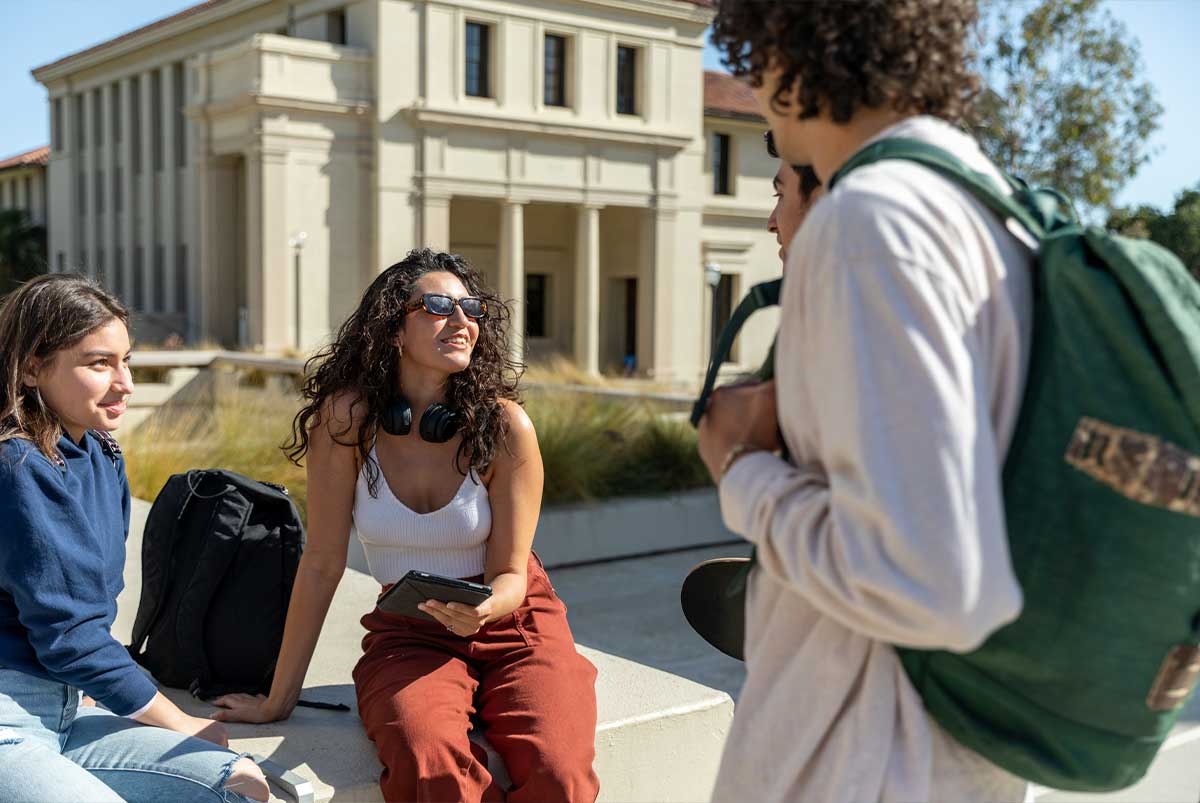If you’re wondering how to pay the ever-increasing cost of college or professional programs, financial assistance may be the answer.
You can get financial aid and student loans to help pay for your education – but they aren’t the same thing.
We’ll cover the difference between financial aid and student loans, how to apply for them and explore what each assistance option offers.
Are Financial Aid and Student Loans the Same?
Sometimes these terms are used interchangeably, but they aren’t the same thing. Knowing the difference can inform the type of financial assistance you choose, and it can affect your finances while you’re enrolled and after school. So, let’s take a look.
- Financial aid: Financial aid usually doesn’t need to be repaid. The money can come from the Department of Education, private organizations, schools or states.
- Student loans: Student loans must be repaid with interest. The money can come from federal or private lenders.
While financial aid may seem like the obvious, go-to choice, not all financial aid is free (we’re looking at you, grants!).
The amount of financial assistance you receive can’t be more than what it costs to attend your school or program. Your school will keep track of all the financial aid you receive along with any student loans you have. Schools may even request that you let them know about any money you receive in outside scholarships so the school’s aid doesn’t exceed what it costs to attend.
What Types of Student Loans Are There?
Student loans can be helpful, especially if you need a significant amount of financial assistance to pay for your education. You can get student loans from the federal government or private lenders.
Federal Student Loans
The Direct Loan Program, which is backed by the Department of Education, provides undergraduate and graduate students with low-interest student loans for their higher education expenses.
The main kinds of federal student loans are:
- Direct subsidized loans: Awarded to undergraduate students who demonstrate financial need
- Direct unsubsidized loans: Awarded to undergraduate and graduate students regardless of financial need
- Direct PLUS loans: Awarded to graduate students (Grad PLUS loan) and the parents of dependent undergraduates (Parent PLUS loan) to help pay for education expenses that aren’t covered by financial aid
Your qualification for these loans is determined by the Free Application for Federal Student Aid (FAFSA®) (more on that later), which means the loans will show up on your financial aid award letter. This will impact how much aid you may be able to receive through your school.
Private Student Loans
Private student loans are offered by private lenders, like banks, credit unions, online lenders or other financial institutions. They are awarded based on factors like income, credit score and the cost of tuition.
You don’t need to fill out a FAFSA® form to qualify for private loans, but all your student loans are taken into account when your school decides how much financial aid to award, including your private student loans.
What Types of Financial Aid Are There?
Whether you can demonstrate financial need or not, there are different types of financial aid out there, like scholarships, grants, school and state aid. That’s right, even if you don’t need the help, you may be eligible to receive financial aid.
We’ve put together a list of different types of aid you can apply for to help you decide which one (or which ones) are right for you.
Scholarships
Scholarships are free money; they don’t need to be repaid. They are typically awarded based on merit, talents, interests, achievements or financial need and are available locally, regionally and nationally. Some scholarships focus on specific demographics, like women, racial or ethnic groups or students in certain majors or on certain career paths.
Scholarships can range from a lump sum of money that covers your entire tuition to a smaller amount that might help you buy books. Scholarships are provided by a wide range of organizations, including the federal government, states, schools, private organizations and nonprofits.
Grants
Grant money usually doesn’t need to be repaid unless you withdraw from your program or school, or you no longer meet the grant’s eligibility requirements. Most grants are awarded based on need, not merit.
Grants can be awarded by the federal government, states, schools, private organizations and nonprofits.
Work-study programs
Federal work-study provides part-time jobs to undergraduate and graduate students who have demonstrated financial need. Because you are paid by your school, there are no restrictions on how you can use the money you earn.
You’ll earn at least the federal minimum wage, and the total amount you make can’t exceed your predetermined work-study award. Check with your school’s financial aid office to see if your school participates in the program.
Institutional aid
Your school may offer financial aid – including scholarships and grants. Check a school’s financial aid office to see what they offer.
State aid
Most states offer some kind of student financial aid. Typically, you’re only eligible for a state’s financial aid if you attend a school in the same state, but there are some exceptions.
Check out the National Association of Student Financial Aid Administrators’ list of state-run financial aid programs to see what your state may offer.
Other types of aid
There is financial aid available beyond the programs we’ve outlined, including:
- Employers and private companies
- Nonprofits
- Military aid programs
- Religious groups
- Individuals
- Communities
- Professional and social organizations
You may be able to claim a certain amount of qualifying school expenses as a tax credit when you file. This may help lower the amount you owe in taxes or even help you get a refund.
How Do I Apply for Financial Aid?
To take advantage of most financial assistance options (which includes both financial aid and federal student loans) you’ll need to fill out the FAFSA® form. The FAFSA® is used to determine whether you qualify for federal financial aid, federal student loans and school or state aid. It also helps determine how much financial assistance you’ll receive.
The Department of Education and each state has a deadline for submitting the FAFSA® form. You can check the federal and state deadlines on StudentAid.gov.
Your school may also have a FAFSA® submission deadline. Because there could be a gap between when you submit the form and when your school receives the information, make sure you know what your school’s deadline is so it gets to them on time.
Other ways to apply
Besides filling out the FAFSA® form, there are other ways to apply for financial aid – especially if you’re looking for financial aid that isn’t awarded by the federal government.
- Scholarship search engine website: Typing “college scholarships” into your search engine – and getting more specific by adding your state (for example, “college scholarships in New York State”) – can go a long way. It may also be worth it to check out the Department of Labor’s free scholarship search tool.
- High school guidance counselor: If you’re in high school, your guidance counselor may be able to help you navigate the financial aid options that are available to you. They can help point you in the right direction based on the programs and schools you’re interested in.
- College or university financial aid office or website: Take a look at a prospective school’s website. Contact their financial aid office to learn what aid they offer and to get your questions answered about the application process.
Take Advantage of Free Money
You wouldn’t be the first person to assume that student loans are your only way to finance your higher education (been there, done that!). But there are – no exaggeration – thousands of scholarships and financial aid options available to you. And many of these options don’t require you to repay the money.
So, before you start applying for student loans, talk to your high school guidance counselor, contact the financial aid office of the schools you’re interested in and search online to try and take advantage of free money.
The Short Version
- You can get financial aid and student loans to help pay for your education – but they aren’t the same thing
- There are different types of financial aid out there, like scholarships, grants, school and state aid
- The FAFSA® form is used to determine whether you qualify for federal financial aid, federal student loans and school or state aid




